On the Road is a weekday feature spotlighting reader photo submissions.
From the exotic to the familiar, whether you’re traveling or in your own backyard, we would love to see the world through your eyes.
This week, besides Albatrossity and Bill of course, we’ll see something new and different from Steve from Mendocino. And then Paul in St. Augustine will take us on a 2-day trip to the Tongariro Alpine Crossing in New Zealand!
Albatrossity
Week four of the Summer in Flyover Country series will showcase some young local birds, and a few migrants which are starting to trickle through. August is always an exciting time to go birding; you can often find unexpected birds, or molting birds with funky plumages. More than occasionally you might even have to work hard to identify them.
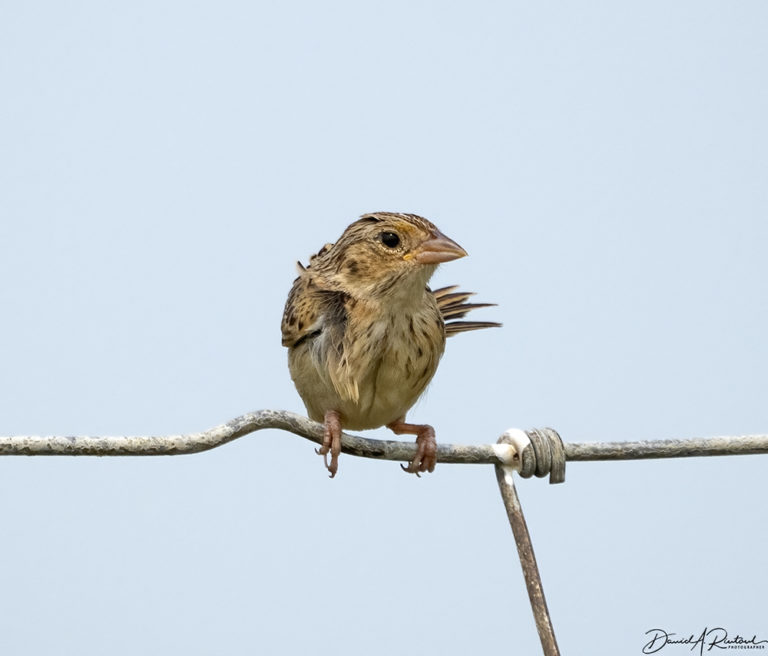
As I may have mentioned before, our local Grasshopper Sparrow (Ammodramus savannarum) populations are low this summer, perhaps as a result of a killing winter week in their wintering grounds in Texas. So I celebrate every time I see a hatch-year Grasshopper Sparrow here this summer, like this one. It still has the yellow gape (corners of the mouth) that helped it attract parental attention in the nest, and very spiffy tail feathers, unlike the worn-out stubs that many adult birds display at this time of year. Let’s hope it lives long and prospers!
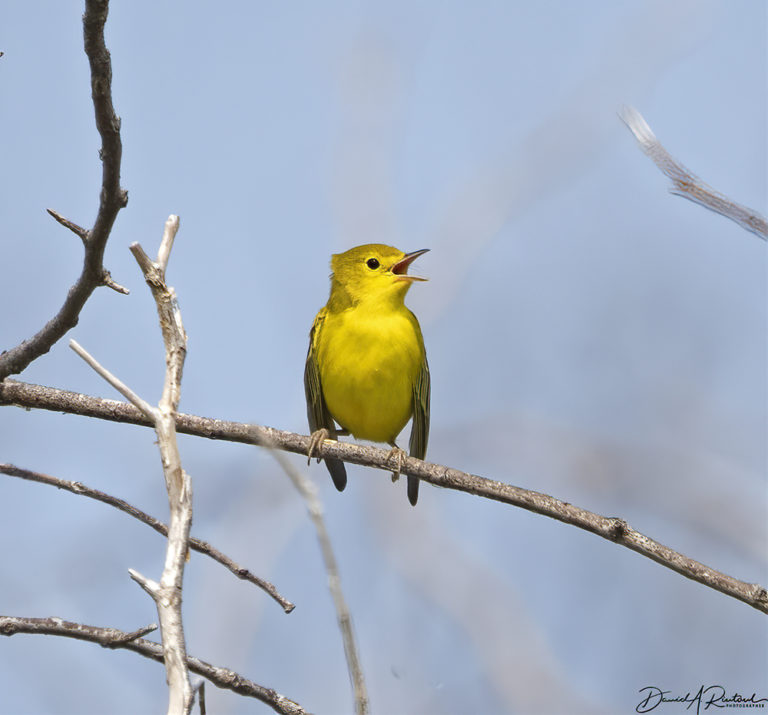
Only a few warbler species stay in Flyover Country for the summer, and this Yellow Warbler (Setophaga petechia) is one of those. This bright adult female seems to have recently molted, and is perhaps trumpeting her stunning new look to the world. Either that or she was panting in the heat…
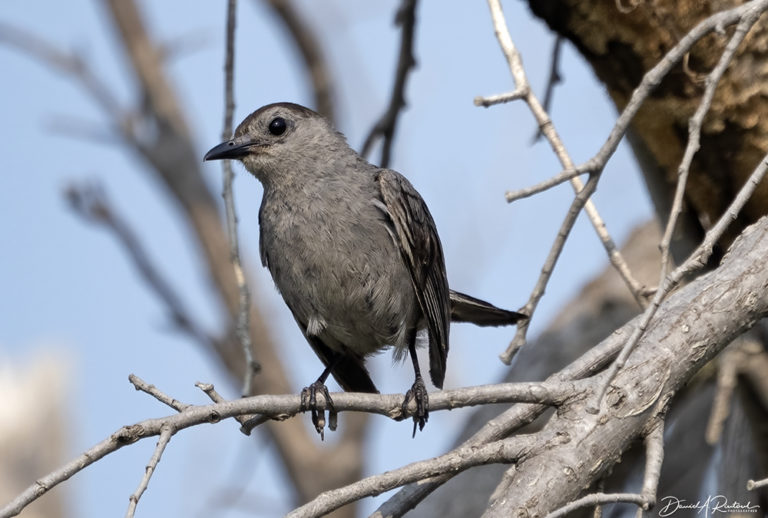
Gray Catbirds (Dumetella carolinensis) are vocal and abundant residents of the wooded brushy areas on the prairie edges, and this one was guarding a nice pokeberry (Phytolacca americana) patch where the poke berries were just about ripe. All parts of the poke plant are toxic for humans, but birds (of many species) consume them avidly. The generic name of this plant means “plant dye”, and pokeberry juice is indeed a powerful pigment. When I was banding birds near a pokeberry patch, I learned not to hold the catbirds above the data sheet; catbird poop laced with pokeberry juice can permanently stain the paper (or your pants, or shirt, or anything else that gets in the way of one of those emissions).
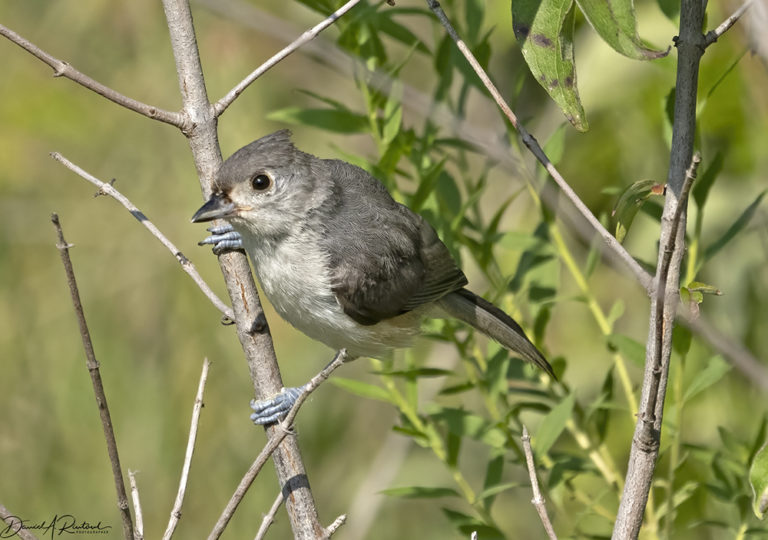
Here’s a familiar bird to most birders in eastern North America, a Tufted Titmouse (Baeolophus bicolor). This is a recently-fledged youngster, because it has a limited amount of dark feathers on the forehead, and a faint buffy eye-ring. It was following an adult around, but its plaintive begging was soundly ignored, so it flew off to fend for itself.
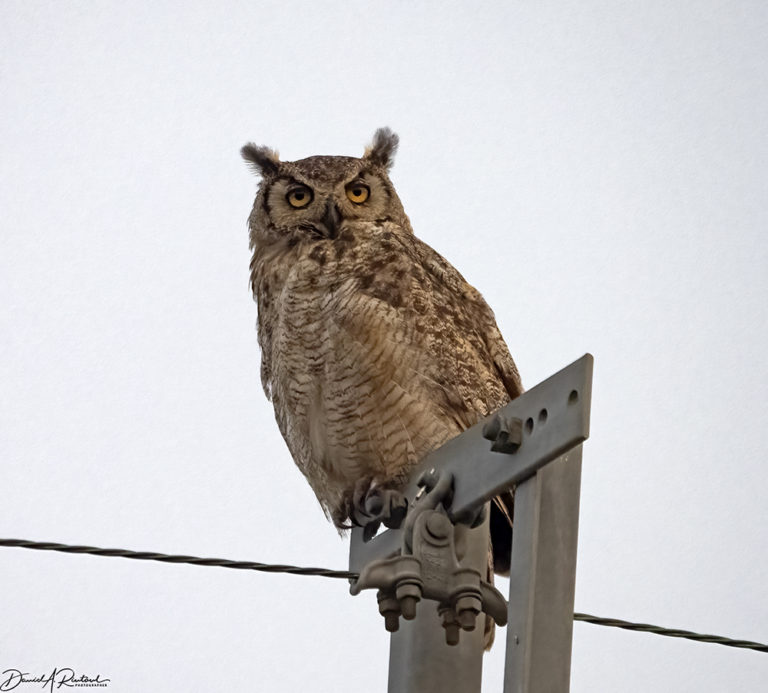
I made a trip to our stellar National Wildlife Refuge, Quivira, and on the way found this magnificent Great Horned Owl (Bubo virginianus). It was still hunting even though the sun had come up, so that glare probably also means that it is hungry.
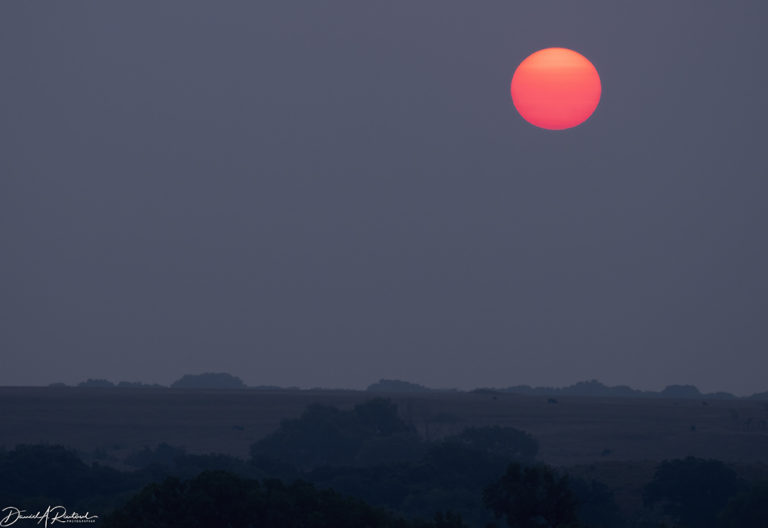
Speaking of the sun, here is the sunrise that day. Like most of the country, we are having very colorful sunrises and sunsets, thanks to the smoke from all the fires in the west.
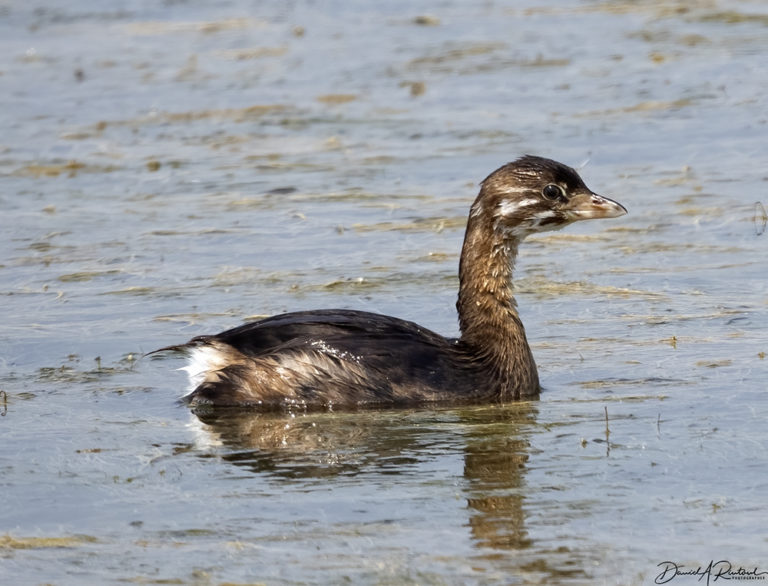
Pied-billed Grebes (Podilymbus podiceps) clearly had a good year, production-wise, at Quivira. There are young grebes, with their stripey faces and their fluffy white butts, on just about every bit of open water at the refuge this summer. Interestingly, even though this is the most widespread grebe species in the Americas (from Canada to Tierra del Fuego), very little is known about population parameters, longevity, or annual reproductive success of this species. The little that is known mostly comes from studies in North America. If you know somebody who wants a wide-open research topic in South America, tell them about this!
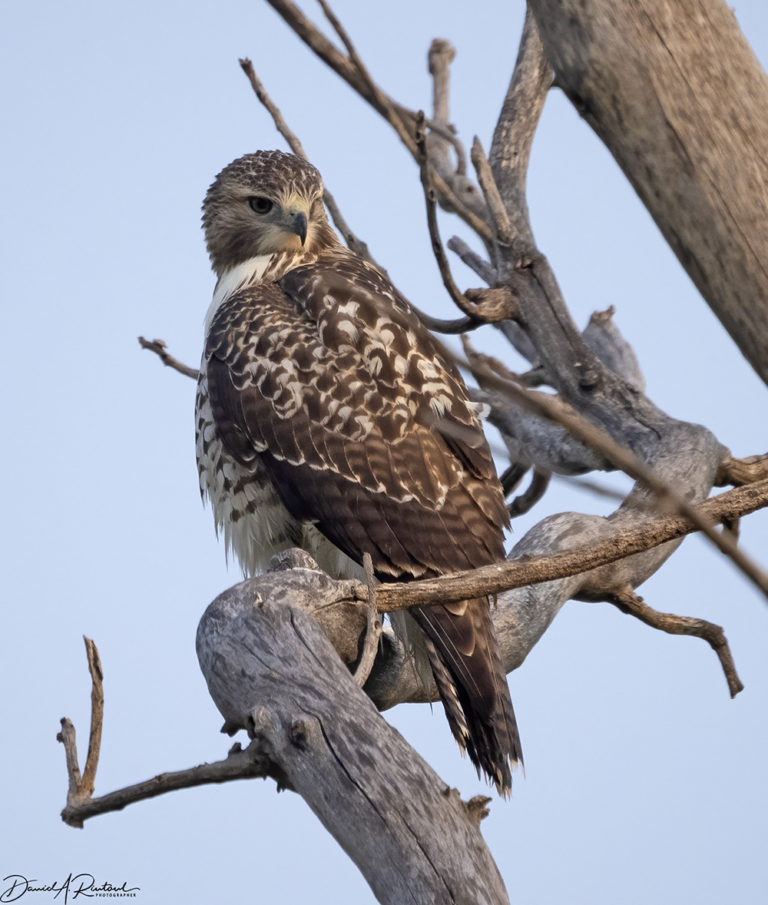
Another local youngster seen at Quivira was this hatch-year Red-tailed Hawk (Buteo jamaicensis), looking very regal from its preferred perch in a dead cottonwood tree.
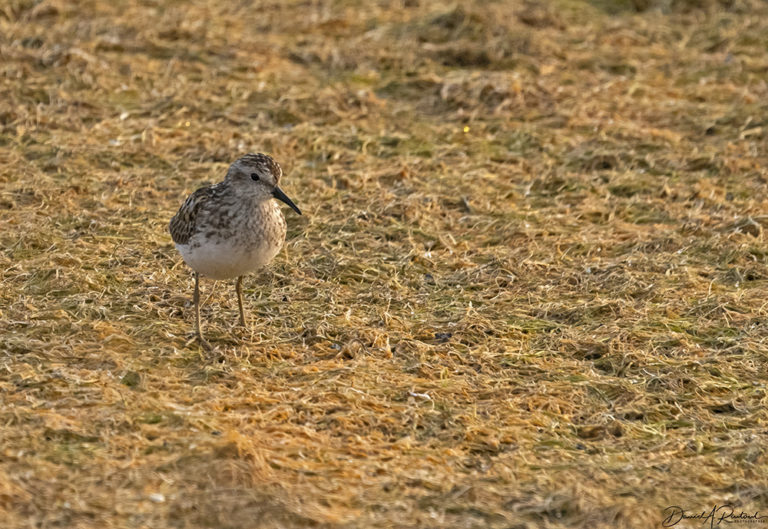
One of our earliest sub-Arctic shorebird migrants, the Least Sandpiper (Calidris minutilla) is the smallest shorebird in the world, and very common in marshes in Flyover Country in July and August. Despite its diminutive size and overall resemblance to a lot of other small shorebird species, it is usually easy to ID, since it is the only small sandpiper (aka peep) with yellow legs. You just have to hope that it has not been in mud so that its leg color is disguised…
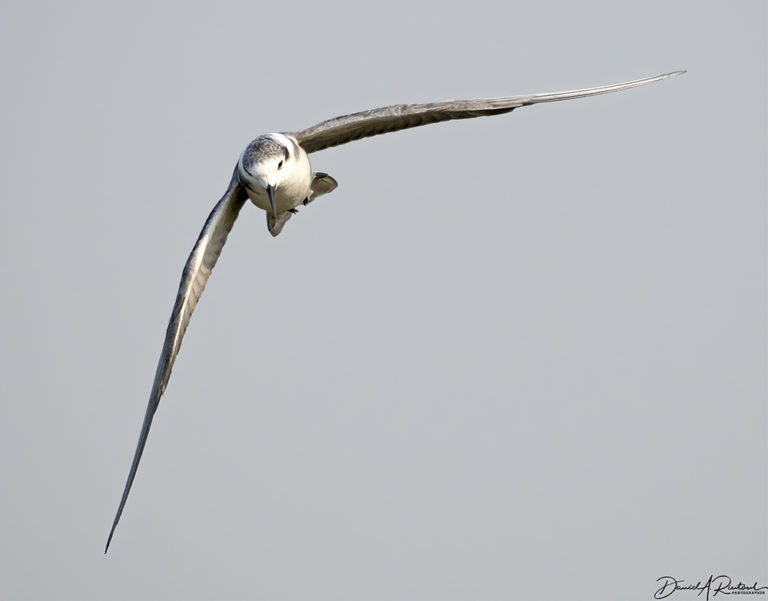
This is one of those molting birds with a funky plumage that was mentioned above. Despite that pale overall color, this is a Black Tern (Chlidonias niger). It has lost the black upper chest and head feathers that make it very distinctively black in summer plumage, and has reverted to a gray-and-white color scheme that most terns favor. It could be a local bird (there are breeding records for both Quivira and the state refuge a bit further north, Cheyenne Bottoms), or it could be an early migrant from the northern prairies. There were some blacker ones flying around in the same vicinity, so this one has started its molt quite early.

eclare
Beautiful sunrise!
Rob
The Grasshopper Sparrow is particularly adorable
Geminid
Thanks again for the great pictures and excellent writing. I forwarded the post to my sister and five friends. It’s a cheerful way to begin the work week.
Laura Too
Happy Monday, all are beautiful pictures! Thanks! I LOL’ed at the catbird banding. South Minneapolis is famous for our crow gatherings in the winter. ( https://www.onlyinyourstate.com/minnesota/murder-of-crows-mn/ ) They once had a poke berry or blueberry dinner before settling in over our cars for the night. They can make a mess on the best of their party nights, but this seemed to be the equivalent of a teen bash with sloe gin. (Dating myself? Don’t know if the kids still drink that) You could hear a collective scream from the car owners about 7 am as they went to work! A good time was had by all.
Betty
That yellow warbler! What a beauty.
JanieM
Like Laura Too, I loved the catbird story. Who would ever have thought that one of the best ways to start a week would be to read stories of bird poop’s unwanted dyeing qualities! — And of course, the pictures.
The patterning on the red-tailed hawk’s feathers is striking and beautiful. Will it settle down into a more regular (?) pattern as time passes?
Albatrossity
@JanieM:
Next spring and summer those feathers will be lost and replaced with new adult feathers. Typically those are more colorful (for example, the brown banded tail feathers will be replaced by red ones). Folks who know a lot more than me about feathers can tell you a lot more about specific feather tracts and the patterns of the adult vs the juvenile feathers in those tracts.
JanieM
@Albatrossity: Thanks!
stinger
Was going to say how much I like the feather pattern on the owl’s chest — looks like tree rings — and then I saw the Red-tailed Hawk! And now you’ve addressed the latter in response to JanieM. Thanks, as always, for your information and entertaining posts!
J R in WV
Don’t know which birb is my favorite — a common problem with these posts. Hawk and Owl tie for first place.
Many years ago before i retired, I worked at a huge state office building housing the Dept of Environmental Protection, where lots of out door enthusiasts work, including bird watchers.
One spring a sandpiper (I think?) laid eggs in the gravel between concrete blocks in the parking lot. No nest, just eggs on gravel. Signs were posted, cones were placed, no one was allowed to step on eggs or baby birds.
Was hysterical in some ways, of course there were people who just had a job and didn’t know a sandpaper from a tuna. They needed the signs and cones, as did visitors seeking permits or hearings.
Those peeps had a huge team trying to make sure they were successfully raised up — who knew it could take a 42-person team to raise 3 or 4 sandpiper peeps? How do they do it without any help? I just watched from afar… everything was successful~!~
A woman from anywhere (formerly Mohagan)
Wonderful pictures and commentary as usual. Thanks! These are really a treat.